
The USS CuChulain is a Nova-class Federation starship designed for short-term planetary research missions. It was placed in service starting in the late 24th century.
Technical data
The Nova-class was designed as a science and scout vessel, intended for short-term planetary research and analysis. It is not typically suitable for combat operations. The Nova design has a maximum speed of warp 8 and approximately eighty crewmembers.
Physical arrangement
The Nova-class had a design similar to that of an Intrepid-class starship, though smaller in size. It consisted of a saucer section with a curved triangular shape. The secondary hull was directly attached to the underside of the saucer with two warp nacelles.
Tactical systems
Though Nova class vessels were considered science vessels, they had a wide assortment of weaponry, allowing the vessel to handle many threats on its own. It was equipped with eleven strategically placed phaser arrays: eight on the saucer and three on the secondary hull, two forward-facing photon torpedo launchers at the bow of the saucer opposite of the secondary deflector, and one aft-facing launcher.The third, aft-facing torpedo launcher, was not visible on the model or displayed on the MSD.
The shields of a Nova-class ship

In order to prevent space debris and objects from colliding and damaging the vessel, Nova-class vessels, like other Starfleet vessels, were equipped with a navigational deflector at the bow of the secondary hull. If the main deflector was damaged or disabled, a secondary deflector on the saucer could substitute the main deflector.
Like most Starfleet vessels, the Nova-class was also equipped with a deflector shield for defensive purposes. Shields on a Nova-class could be fully recharged after charging the shield emitters for 45 seconds. This task required the shields to be dropped. The shield grid itself was located along the secondary hull.
Interior design
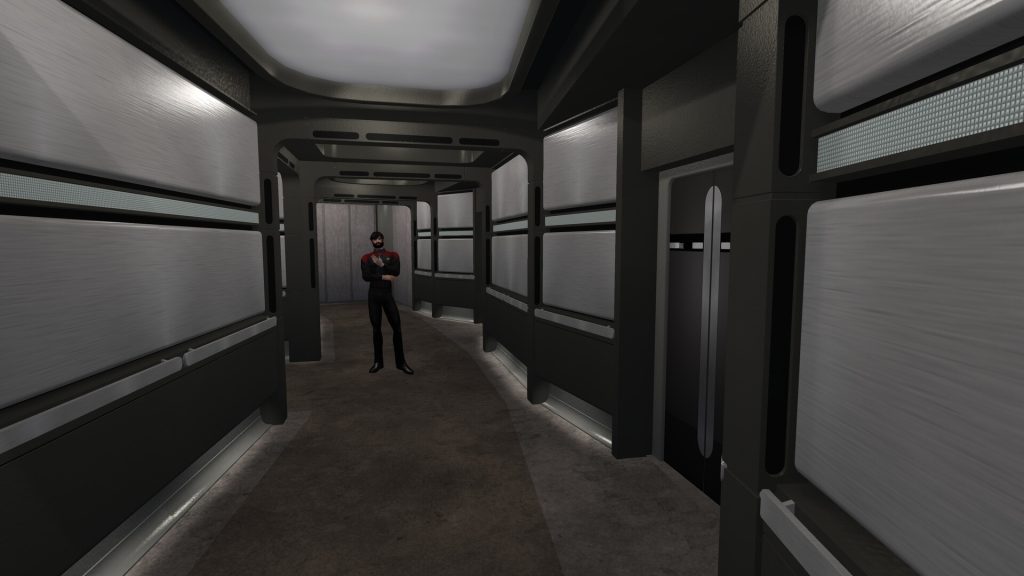
Though a small ship, the Nova-class was able to accommodate the needs of the crew. This class of starship had eight decks.
Bridge of USS Cuchulain
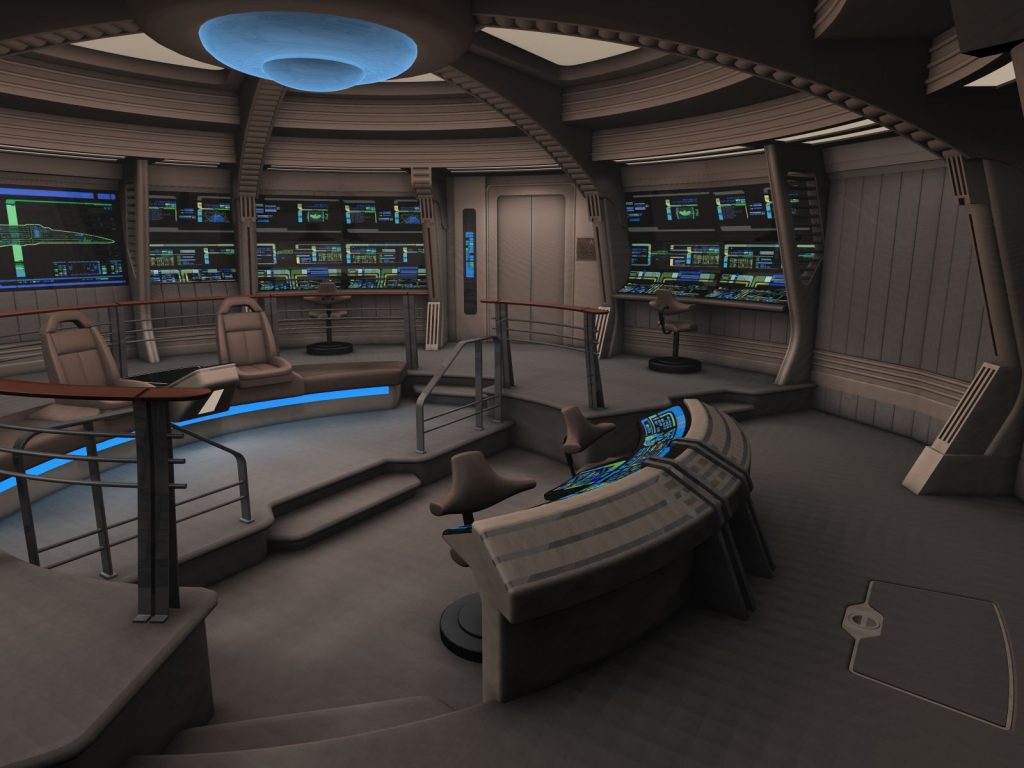
The main bridge, located near the center of Deck 1, was the command center for the ship. Despite the size of the ship, the spacious bridge allowed for the ease of movement between stations.
The central command area on the bridge was at the very center of the circular area in a submerged location. The captain’s chair was starboard side, and the executive officer’s was on the port side. Between them was a console built into the structure that provided a place for information dissemination, as well as operational command of the starship. Directly ahead of the command area and down into a further sunken area, was the conn.
The rest of the stations were located on the perimeter of the round bridge, including the master systems display behind the command seats and the main viewscreen in the standard frontwards position. Stations, such as tactical, were not stand-out stations due to the scientific nature of the design. When necessary, tactical would usually be assigned to the forward, starboard side console just right of the main viewscreen.
Entryways to the bridge were located at the port and starboard sides on the upper level. The port door leads to the main turbolift while the starboard door leads to a corridor that accesses other sections of Deck 1. Access to the captain’s ready room was also located on the port side.
Main engineering

Main engineering was located on Deck 7. The Nova-class engineering section only spanned one deck and featured four wall-based engineering consoles and a warp core analysis console in front of the core itself. At the far end of the room was the warp core with a transparent floor and support railing around it. The core spanned from Decks 5-8 and could be ejected from the bottom of the ship through an ejection hatch. The core could be accessed from either engineering or from the maintenance areas around the core
Sickbay and science labs
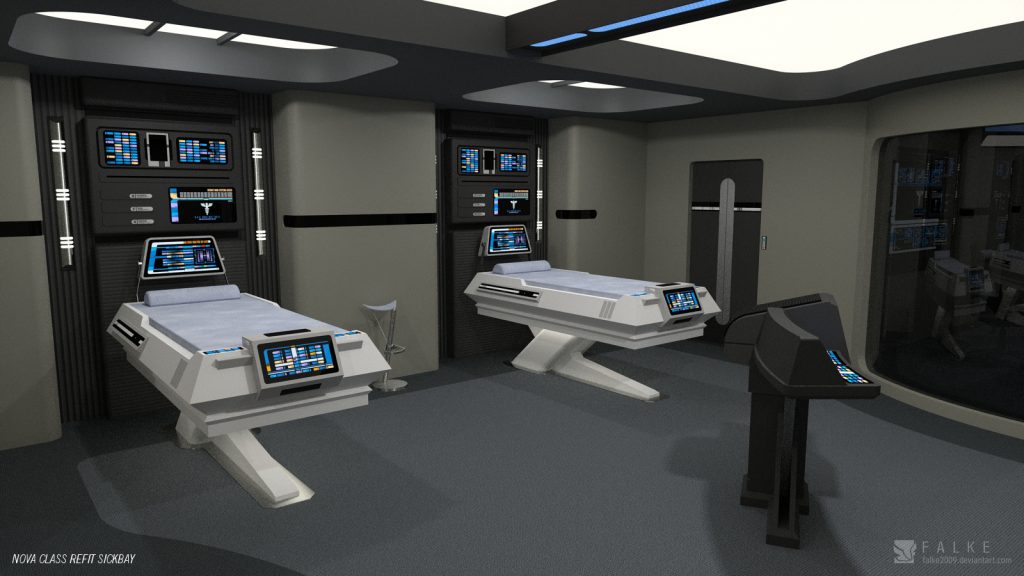
The Nova-class had one sickbay located on Deck 4, in front of the shuttlebay. The Nova-class medical facility was equipped with an Emergency Medical Hologram system and was one of the earliest examples of the medical holoprogram being put into use aboard Federation starships.
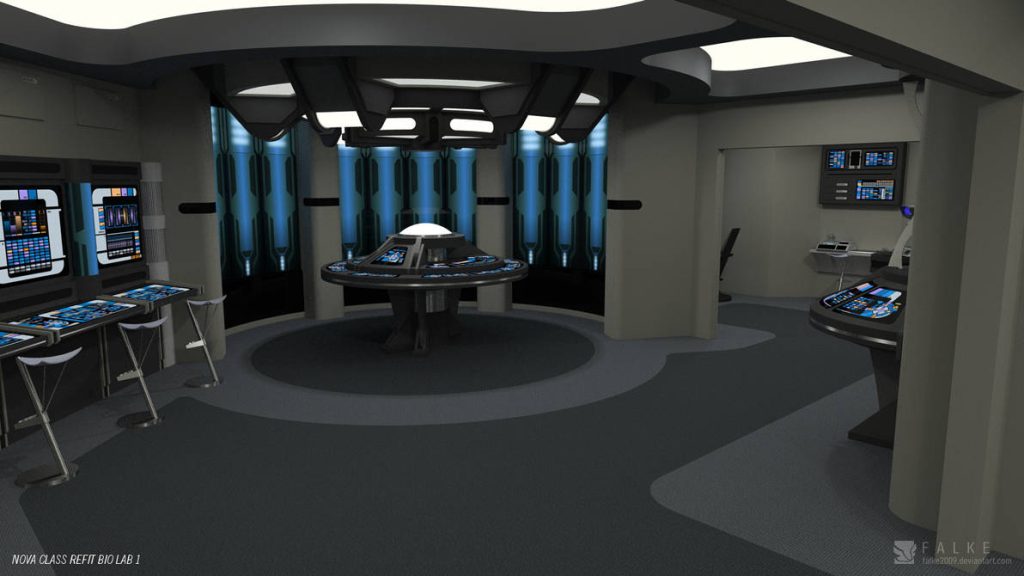
Additionally, as a science vessel, the Nova-class was equipped with a number of specially equipped science and research labs. The labs were similar to those found on an Intrepid-class vessel and served many purposes and supported numerous personnel. They featured a great number of work consoles to perform numerous tasks and had one main work console area in an alcove.
Auxiliary craft and cargo bays
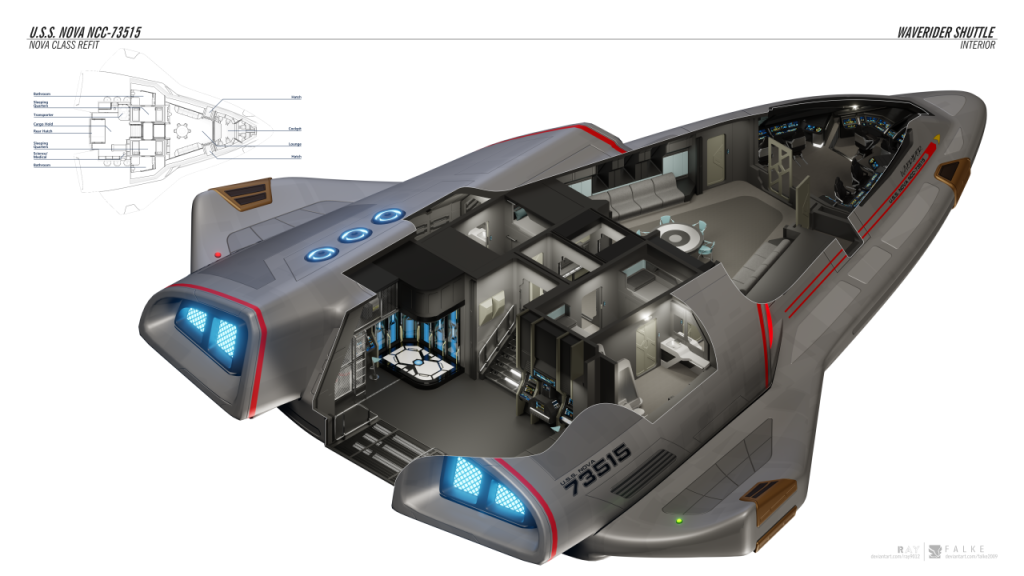
One unique feature of the Nova-class is its Waverider shuttle, which was located in a special docking port on the ventral side of the primary hull, similar to that of the Aeroshuttle on the Intrepid-class. They also carry at least two Type 6 shuttlecraft.
Behind the main sickbay were the two shuttlebays. The aft-most shuttlebay’s space doors were directly aft (similar to the Intrepid-class). The inner shuttlebay’s doors opened directly above.
In the saucer on Deck 4, a short trip from the shuttle bays, was the aforementioned Waverider auxiliary craft, which was integrated into the Nova-class’ hull. Spanning Decks 2 and 3 in front of the shuttlebay were the main cargo bays that could also contained workbees, used for transportation and repair purposes.
Additionally, like a majority of starships in the 24th century, Nova-classes were equipped with emergency escape pods, twenty in total; fourteen were located on Deck 3, four on Deck 1 and two on Deck 2, all located in the saucer section. They were stored under hatches to permit both launch and retrieval.
Crew Quarters
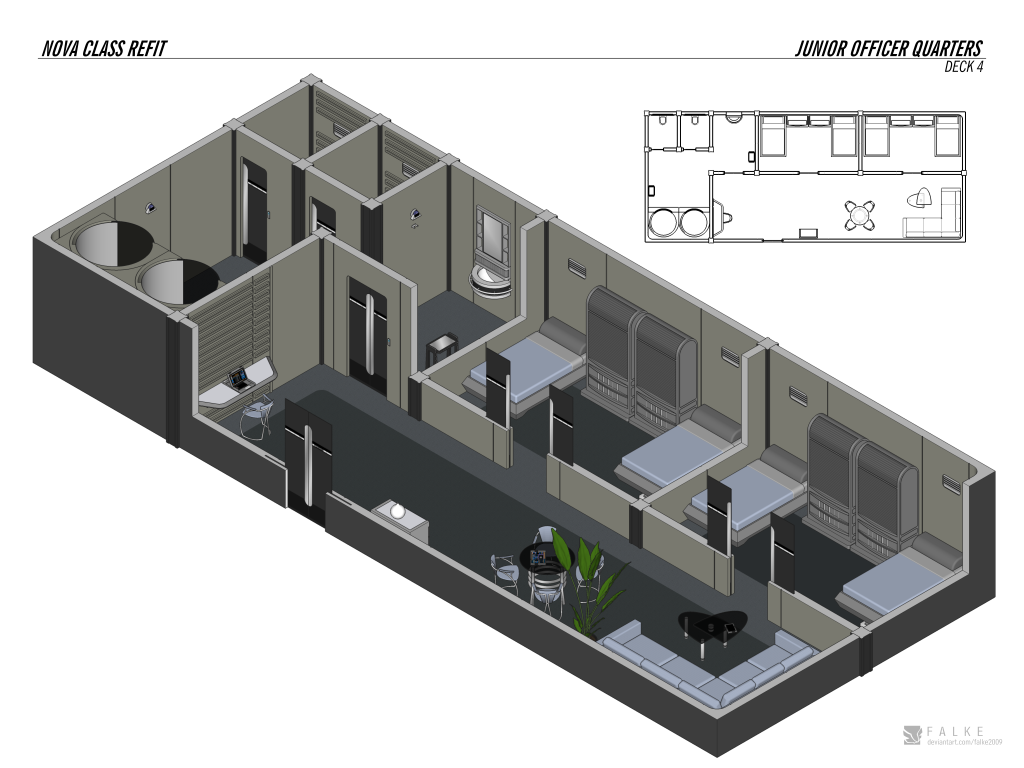
Due to the size of this class, crew quarters were spartan, but provided all the standard needs for the crew. A majority of the quarters were standard crew quarters, though a number of them were larger for use by the senior staff. The majority of these larger quarters were located on Decks 1 and 4, with slightly smaller ones located on Decks 2 and 6.